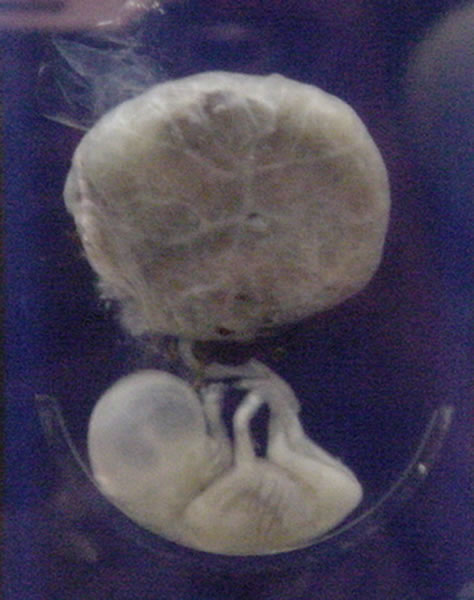|
Birthweight
Birth weight is the body weight of a baby at their birth. The average birth weight in babies of European and African descent is , with the normative range between . 15% of babies born in 2012 had a low birth weight and 14.7% in 2020. It is projected that 14.2% of newborns will have low birth weight in 2030, falling short of the 2030 Sustainable Development Goals target of a reduction of 30%. On average, babies of Asian descent weigh about . The prevalence of low birth weight has changed over time. Trends show a slight decrease from 7.9% (1970) to 6.8% (1980), then a slight increase to 8.3% (2006), to the current levels of 8.2% (2016). The prevalence of low birth weights has trended slightly upward from 2012 to the present. Low birth weight is associated with neonatal infection, infant mortality, as well as illness into adulthood. Numerous studies have attempted, with varying degrees of success, to show links between birth weight and later-life conditions, including diabetes, ... [...More Info...] [...Related Items...] OR: [Wikipedia] [Google] [Baidu] |
Infant Mortality
Infant mortality is the death of an infant before the infant's first birthday. The occurrence of infant mortality in a population can be described by the infant mortality rate (IMR), which is the number of deaths of infants under one year of age per 1,000 live births. Similarly, the ''child mortality rate'', also known as the ''under-five mortality rate,'' compares the death rate of children up to the age of five. In 2013, the leading cause of infant mortality in the United States was birth defects. Other leading causes of infant mortality include birth asphyxia, pneumonia, neonatal infection, diarrhea, malaria, measles, malnutrition, congenital malformations, term birth complications such as abnormal presentation of the fetus, umbilical cord prolapse, or prolonged labor. One of the most common preventable causes of infant mortality is smoking during pregnancy. Lack of prenatal care, alcohol consumption during pregnancy, and drug use also cause complications that may result in in ... [...More Info...] [...Related Items...] OR: [Wikipedia] [Google] [Baidu] |
Preterm Birth
Preterm birth, also known as premature birth, is the Childbirth, birth of a baby at fewer than 37 weeks Gestational age (obstetrics), gestational age, as opposed to full-term delivery at approximately 40 weeks. Extreme preterm is less than 28 weeks, very early preterm birth is between 28 and 32 weeks, early preterm birth occurs between 32 and 34 weeks, Late preterm infant, late preterm birth is between 34 and 36 weeks' gestation. These babies are also known as premature babies or colloquially preemies (American English) or premmies (Australian English). Symptoms of preterm labor include uterine contractions which occur more often than every ten minutes and/or the leaking of fluid from the vagina before 37 weeks. Premature infants are at greater risk for cerebral palsy, delays in development, hearing problems and problems with their Visual impairment, vision. The earlier a baby is born, the greater these risks will be. The cause of spontaneous preterm birth is often not known. R ... [...More Info...] [...Related Items...] OR: [Wikipedia] [Google] [Baidu] |
Neonatal Infection
Neonatal infections are infections of the neonate (newborn) acquired during prenatal development or within the first four weeks of life. Neonatal infections may be contracted by mother to child transmission, in the birth canal during childbirth, or after birth. Neonatal infections may present soon after delivery, or take several weeks to show symptoms. Some neonatal infections such as HIV, hepatitis B, and malaria do not become apparent until much later. Signs and symptoms of infection may include respiratory distress, temperature instability, irritability, poor feeding, failure to thrive, persistent crying and skin rashes. Risk factors include previous maternal infection, preterm delivery (< 37 weeks gestation) and premature rupture of membranes (breakage of the |
Low Birth Weight
Low birth weight (LBW) is defined by the World Health Organization as a birth weight of an infant of or less, regardless of gestational age. Infants born with LBW have added health risks which require close management, often in a neonatal intensive care unit (NICU). They are also at increased risk for long-term health conditions which require follow-up over time. Classification Birth weight may be classified as: * High birth weight (macrosomia): greater than * Normal weight (term delivery): * Low birth weight: less than ** Very low birth weight (VLBW): less than ** Extremely low birth weight: less than Causes LBW is either caused by preterm birth (that is, a low gestational age at birth, commonly defined as younger than 37 weeks of gestation) or the infant being small for gestational age (that is, a slow prenatal growth rate), or a combination of both. In general, risk factors in the mother that may contribute to low birth weight include young ages, multiple pregnancie ... [...More Info...] [...Related Items...] OR: [Wikipedia] [Google] [Baidu] |
Pregnancy
Pregnancy is the time during which one or more offspring gestation, gestates inside a woman's uterus. A multiple birth, multiple pregnancy involves more than one offspring, such as with twins. Conception (biology), Conception usually occurs following sexual intercourse, vaginal intercourse, but can also occur through assisted reproductive technology procedures. A pregnancy may end in a Live birth (human), live birth, a miscarriage, an Abortion#Induced, induced abortion, or a stillbirth. Childbirth typically occurs around 40 weeks from the start of the Menstruation#Onset and frequency, last menstrual period (LMP), a span known as the Gestational age (obstetrics), ''gestational age''; this is just over nine months. Counting by Human fertilization#Fertilization age, ''fertilization age'', the length is about 38 weeks. Implantation (embryology), Implantation occurs on average 8–9 days after Human fertilization, fertilization. An ''embryo'' is the term for the deve ... [...More Info...] [...Related Items...] OR: [Wikipedia] [Google] [Baidu] |
Childbirth
Childbirth, also known as labour, parturition and delivery, is the completion of pregnancy, where one or more Fetus, fetuses exits the Womb, internal environment of the mother via vaginal delivery or caesarean section and becomes a newborn to the world. In 2019, there were about 140.11 million human births globally. In Developed country, developed countries, most deliveries occur in hospitals, while in Developing country, developing countries most are home births. The most common childbirth method worldwide is vaginal delivery. It involves four stages of labour: the cervical effacement, shortening and Cervical dilation, opening of the cervix during the first stage, descent and birth of the baby during the second, the delivery of the placenta during the third, and the recovery of the mother and infant during the fourth stage, which is referred to as the Postpartum period, postpartum. The first stage is characterised by abdominal cramping or also back pain in the case of B ... [...More Info...] [...Related Items...] OR: [Wikipedia] [Google] [Baidu] |
Celiac Disease
Coeliac disease (British English) or celiac disease (American English) is a long-term autoimmune disorder, primarily affecting the small intestine. Patients develop intolerance to gluten, which is present in foods such as wheat, rye, spelt and barley. Classic symptoms include gastrointestinal problems such as chronic diarrhoea, abdominal distention, malabsorption, loss of appetite, and among children failure to grow normally. Non-classic symptoms are more common, especially in people older than two years. There may be mild or absent gastrointestinal symptoms, a wide number of symptoms involving any part of the body, or no obvious symptoms. Due to the frequency of these symptoms, coeliac disease is often considered a systemic disease, rather than a gastrointestinal condition. Coeliac disease was first described as a disease which initially presents during childhood; however, it may develop at any age. It is associated with other autoimmune diseases, such as Type 1 ... [...More Info...] [...Related Items...] OR: [Wikipedia] [Google] [Baidu] |
GCK (gene)
Mitogen-activated protein kinase kinase kinase kinase 2 is an enzyme that in humans is encoded by the ''MAP4K2'' gene. Function The protein encoded by this gene is a member of the serine/threonine protein kinase family. Although this kinase is found in many tissues, its expression in lymphoid follicles is restricted to the cells of germinal centre, where it may participate in B-cell differentiation. This kinase can be activated by TNF-alpha, and has been shown to specifically activate MAP kinases. This kinase is also found to interact with TNF receptor-associated factor 2 (TRAF2), which is involved in the activation of MAP3K1/MEKK1. A recent study showed that MAP4K2 is a direct kinase of LATS1/2 and thus regulates the Hippo pathway effectors YAP and TAZ. Interactions MAP4K2 has been shown to interact with RAB8A and TRAF2 TNF receptor-associated factor 2 is a protein that in humans is encoded by the ''TRAF2'' gene. Function The protein encoded by this gene is a memb ... [...More Info...] [...Related Items...] OR: [Wikipedia] [Google] [Baidu] |
TCF7L2
Transcription factor 7-like 2 (T-cell specific, HMG-box), also known as TCF7L2 or TCF4, is a protein acting as a transcription factor that, in humans, is encoded by the ''TCF7L2'' gene. The TCF7L2 gene is located on chromosome 10q25.2–q25.3, contains 19 exons.{ As a member of the TCF family, TCF7L2 can form a bipartite transcription factor and influence several biological pathways, including the Wnt signalling pathway. Single-nucleotide polymorphisms (SNPs) in this gene are especially known to be linked to higher risk to develop type 2 diabetes, gestational diabetes, multiple neurodevelopmental disorders including schizophrenia and autism spectrum disorder, as well as other diseases. The SNP rs7903146, within the TCF7L2 gene, is, to date, the most significant genetic marker associated with type 2 diabetes risk. Function TCF7L2 is a transcription factor influencing the transcription of several genes thereby exerting a large variety of functions within the cell. It is a ... [...More Info...] [...Related Items...] OR: [Wikipedia] [Google] [Baidu] |
Heritability
Heritability is a statistic used in the fields of Animal husbandry, breeding and genetics that estimates the degree of ''variation'' in a phenotypic trait in a population that is due to genetic variation between individuals in that population. The concept of heritability can be expressed in the form of the following question: "What is the proportion of the variation in a given trait within a population that is ''not'' explained by the environment or random chance?" Other causes of measured variation in a trait are characterized as environment (biophysical), environmental factors, including observational error. In human studies of heritability these are often apportioned into factors from "shared environment" and "non-shared environment" based on whether they tend to result in persons brought up in the same household being more or less similar to persons who were not. Heritability is estimated by comparing individual phenotypic variation among related individuals in a population, ... [...More Info...] [...Related Items...] OR: [Wikipedia] [Google] [Baidu] |
Foetal
A fetus or foetus (; : fetuses, foetuses, rarely feti or foeti) is the unborn offspring of a viviparous animal that develops from an embryo. Following the embryonic development, embryonic stage, the fetal stage of development takes place. Prenatal development is a continuum, with no clear defining feature distinguishing an embryo from a fetus. However, in general a fetus is characterized by the presence of all the major body organs, though they will not yet be fully developed and functional, and some may not yet be situated in their final Anatomy, anatomical location. In human prenatal development, fetal development begins from the ninth week after Human fertilization, fertilization (which is the eleventh week of Gestational age (obstetrics), gestational age) and continues until the childbirth, birth of a newborn. Etymology The word ''wikt:fetus#English, fetus'' (plural ''wikt:fetuses#English, fetuses'' or rarely, the solecism ''wikt:feti#English, feti''''Oxford English Dict ... [...More Info...] [...Related Items...] OR: [Wikipedia] [Google] [Baidu] |






